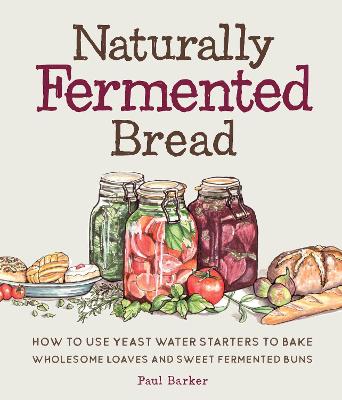Reviewed by annieb123 on
Naturally Fermented Bread is a recipe and tutorial guide for making and using wild yeast starters for baking. Released 13th Oct 2020 by Quarto on their Quarry imprint, it's 160 pages and available in hardcover and ebook formats.
This is a very well written and accurate and factual guide to using wild-caught yeasts from fruit and vegetables to make bread. The yeasts and bacteria aren't isolated in any way so the water cultures will often not just leaven baked goods but also impart a subtle flavor as well of whatever fruit or veg was used to start it.The intro gives the reader all the necessary background info to succeed with the method. The introduction proceeds logically and understandably and includes what materials to start with (and why), safety and cleanliness, tools and equipment and basically everything that the reader needs to get going. The second chapter is a basic tutorial for a basic loaf with tips and troubleshooting for the proper temperatures, kneading, proofing, lots of baking advice, and more general advice for milling grains and using the botanical solutions for probiotic drinks.
The following chapters contain the recipes arranged thematically: loaves, sweet buns, and sourdough options. The recipes include an introduction, yields, ingredients in a bullet point sidebar list (with metric measures given and American standard in parentheses), followed by step by step instructions. Alternative ingredients or flavors are listed at the end of the recipes. Nutritional information is not provided. The ingredients, especially the flours used are quite specific and may need to be sourced from a very well stocked grocery or bake-shop supplier. Every recipe is pictured and the photography is clear and easy to follow. The appendices are comprehensive and full of extra info and include a glossary, safety tips about potentially poisonous plants and fruit items, and a cross referenced index.
This is a really in-depth book but shouldn't intimidate beginning bakers. This would make a superlative selection for smallholders, self-sufficiency readers, gardeners, community gardening and food-resource activists, keen cooks looking to expand their skill-sets and other DIY fans. Five stars.
Disclosure: I received an ARC at no cost from the author/publisher for review purposes.
Reading updates
- Started reading
- 8 November, 2020: Finished reading
- 8 November, 2020: Reviewed
